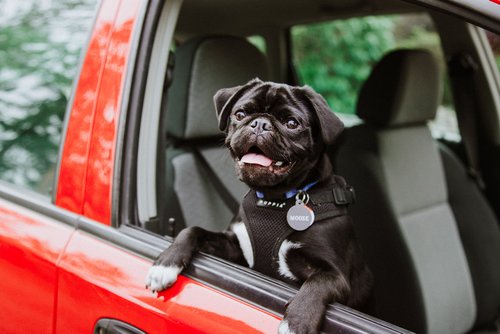

· By Dr. Jill Lopez
Why does my dog hate going to the vet?
Dog owners and dogs alike feel a sense of dread when it comes time to visit the veterinarian. Most dog owners are familiar with having to (sometimes literally) drag their dog from the car to the clinic. It can become very stressful for all parties involved, as seeing your dog under stress can be equally unpleasant for owners. But, why do dogs tend to dislike the vet? This article will explore the vet’s office from your dog’s perspective and provide some solutions to make visits easier for both of you.
The Vet’s Office (from the eyes of a dog)
As most people know, dogs have significantly heightened senses of hearing and smell. They rely on these senses to make accurate judgments about their surroundings and safety. When a dog enters a veterinarian's office, they are flooded with unfamiliar sounds and smells including those of many other animals. It can be extremely overwhelming for a dog to be surrounded by all of these news things, especially the lingering presence of other, unfamiliar dogs. So, right from entering the door, the vet can already be a scary, overwhelming place for your dog. However, this is just the beginning. During your dog’s appointment, they will be touched and poked by someone that they are not familiar with. This can be frightening to many dogs and lead to negative reactions like growling, barking, or running away. If you’re paying a trip to the vet because your dog is sick or injured, they are likely already feeling especially vulnerable. Therefore, all of this unfamiliarity surrounding them will understandably come across as threatening.
Furthermore, just like how people associate the doctor’s office with sickness and pain, dogs similarly associate the vet with negative feelings. If your dog has been to the vet before and is acting anxiously in the car or parking lot, it’s probably because they remember how they felt the last time they were there.
How to Help Your Dog
Though you may not be able to make your dog like the vet, you can absolutely help alleviate some of their stress and make the whole process more manageable. One of the best techniques to accomplish this is through training at home. Spend time familiarizing your dog with having their paws grabbed and being handled. A good trick to make your dog more amicable is to lay them down on their back in-between your legs for at least ten minutes without them getting up. It’s a simple and easy trick that will make your dog more familiar and comfortable with not having complete control. Additionally, grab their paws and mouth area often.
By emulating the restraint techniques that your vet may implement during your visit while you’re at home, your dog will become more accustomed to them. Try placing one forearm under your dog’s head, pressing it into your chest, while using your other hand to pull their body close to you. Hold your dog like this for a few minutes to get them used to it. If they do a good job, make sure to give them lots of treats! After working on these exercises for some time before vet visits, your dog will likely show some improvement during their appointment!
Brave Paws might help if your dog is having anxiety issues with the trip to the vet. Brave Paws Anxiety and Stress Support Chewables may promote calm behavior in dogs who exhibit nervousness or anxious behavior. Our clinically-studied and patented botanical blend contains naturally occurring bioactives, including betulinic acid, which have been found to promote a sense of calm and relaxation in dogs.
